Are you familiar with Mattia Preti, the Italian Baroque artist known as the Cavaliere Calabrese or the Calabrian Knight? The paintings of this important exponent of the Neapolitan School grace churches and museums around the world. His hometown in Calabria also boasts numerous of the artist’s masterworks, and a visit to Taverna opens a window on his long and noteworthy career.
MATTIA PRETI (24 February 1613 – 3 January 1699): CALABRIA, ROME, NAPLES, MALTA
Mattia Preti hails from Taverna, a town with ancient origins located in the foothills of the Sila Mountains about a half hour’s drive north of Catanzaro, the region’s capital. As a young man in 1630, he moved from the small commercial center of the Sila to Rome, where his older brother Gregorio (1603–1672), also an artist, already resided. Immersed in the glow of Caravaggio and his followers, Mattia developed his own style under the influence of the great master’s, in particular with regard to his technique of creating images that appear to emerge directly from the canvas. The drama of this almost theatrical use of light is apparent in Preti’s work.
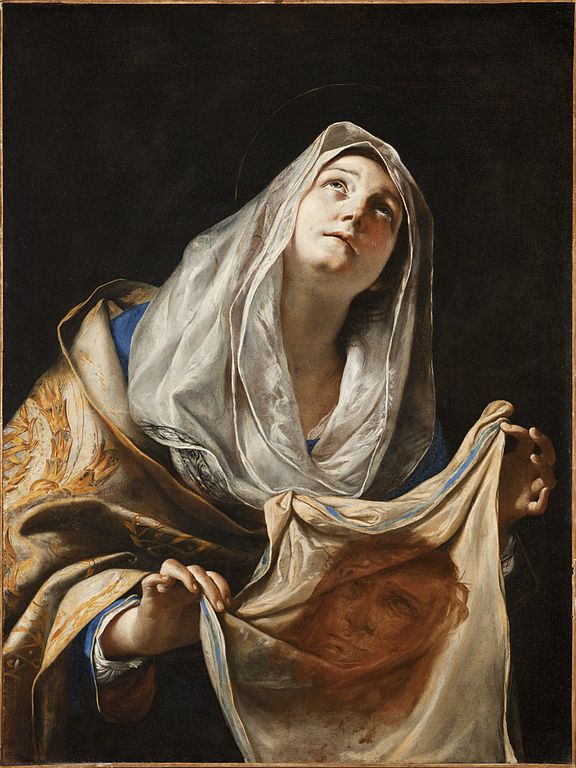
Santa Veronica by Mattia Preti, oil on canvas, 104 x 75 cm, 1651-1653
In 1653, Mattia Preti moved to Naples where he would be influenced by Luca Giordano, several years his junior, and where Mattia himself would contribute to the Neapolitan school of painting.
In 1661 at the behest of the Sovereign Military Order of Malta, Preti moved to Malta, where he decorated most of the interior of St. John’s Co-Cathedral in Valletta and would complete approximately 400 canvases and frescos. He died at the age of 85 in Valletta, Malta’s capital.
THE CAVALIERE CALABRESE
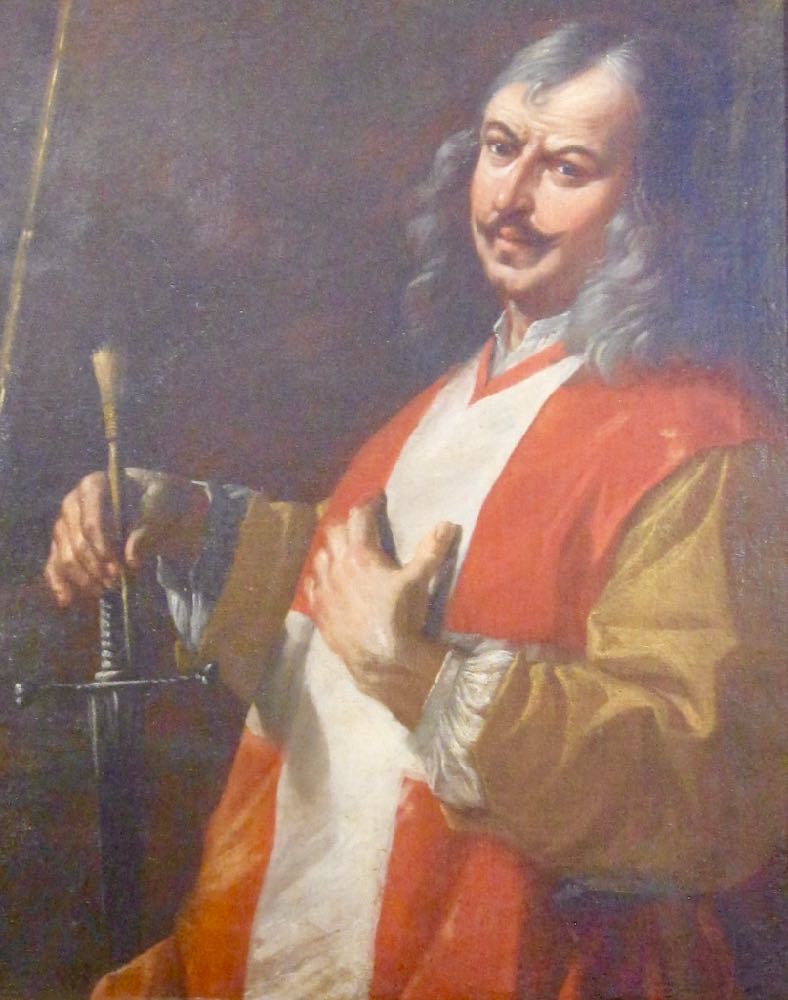
Mattia Preti, self-portrait, detail of the Sermon of St. John the Baptist (pictured below), c. 1672
Early on in his over sixty-year career, Pope Urban VIII made Preti a Knight of Malta. His Calabrian origins inspired the moniker Cavaliere Calabrese.
Mattia Preti’s oeuvre is considerable with an overwhelming number of works in Malta. However, his oil paintings can be found in museums that range from the Hermitage in St. Petersburg to New York City’s Metropolitan Museum of Art to the Art Institute of Chicago and even to the gallery at Bob Jones University in Greenville, South Carolina and the Ringling Museum of Art in Sarasota, Florida.
Of the many opportunities to view Preti’s paintings throughout Italy, numerous canvases are on display in Naples; and the artist’s birthplace of Taverna, a town of fewer than 3,000, features a museum dedicated to the painter and a couple of churches full of his work.
MUSEO CIVICO DI TAVERNA
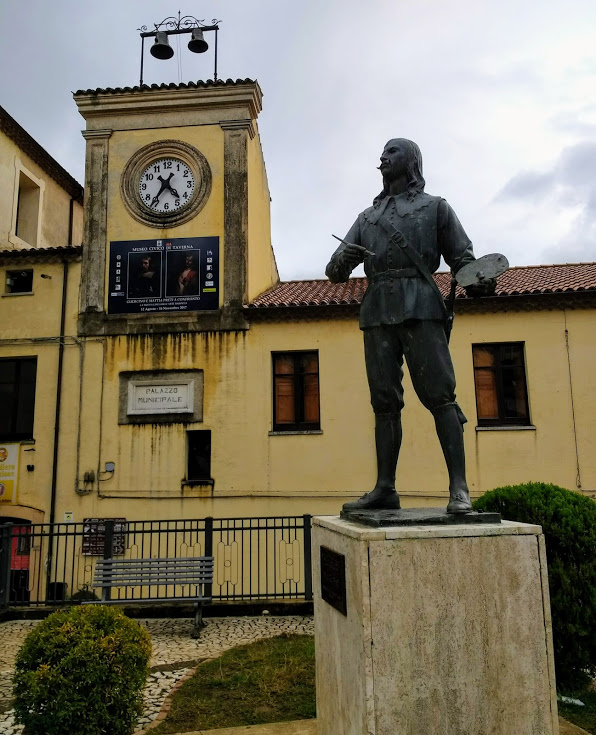
Sculpture of Mattia Preti by Calabria artist Michele Guerrisi (1893-1963) in front of the Taverna Civic Museum
A short scenic drive from Catanzaro, Taverna sits in an attractive position on a hill surrounded by green woods. The Taverna Civic Museum is housed in a former Domenican convent, established together with the adjacent Church of San Domenico in 1464. The abbey building has been modernized, but the ticket office, located in the partially preserved Domenican apothecary, offers a glimpse of the original.
The well-appointed museum was founded in 1989 with a nucleus of 17 and 18th-century works gathered from local churches, convents and private collections. Noted artists include Mattia and Gregorio Preti, Luca Giordano, Giovan Battista Spinelli, Antonio and Giovanni Sarnelli, and Antonio De Bellis.
Interestingly, Jaele che uccide Sisara (Jael Kills Sisara), a work based on a Biblical story from the Book of Judges, is attributed to both the Preti brothers.
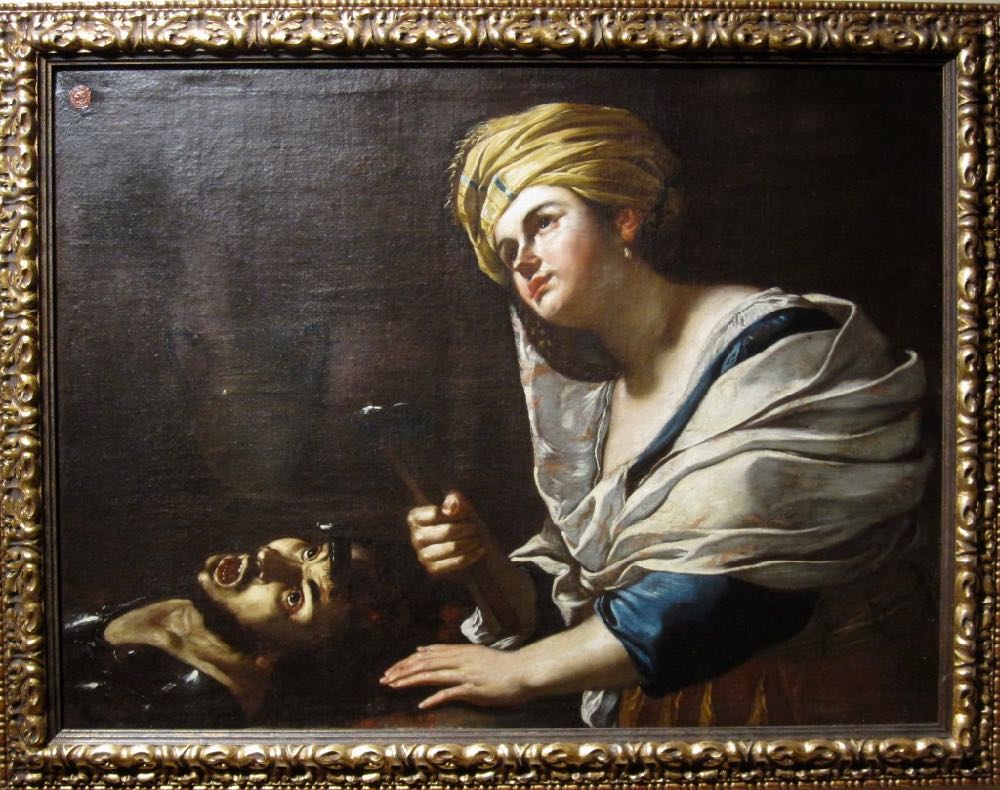
Jaele che uccide Sisara (Jael Kills Sisara), Gregorio and Mattia Preti, oil on canvas, c. 1650-51, Taverna Civic Museum
Several of Mattia’s studies are on display, such as the sanguine drawings of St. Jerome.

Studies of St. Jerome by Mattia Preti, sanguine on paper, 1670s, Taverna Civic Museum
In addition, a large oil on canvas of the erudite saint is also part of the collection.
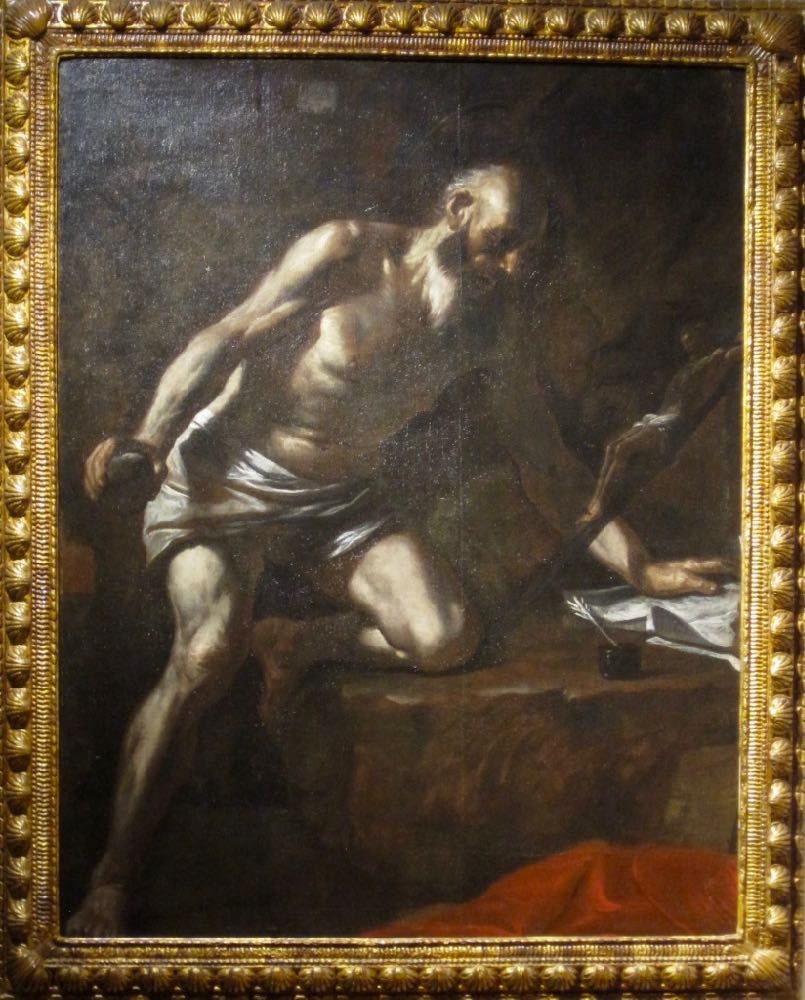
San Girolamo penitente (St. Jerome, the Penitent) by Mattia Preti, oil on canvas, 157 x 122 cm, 1690s, Taverna Civic Museum
In 2005, the museum expanded to include a gallery of contemporary art that features works of noted Italians as well as numerous Calabrians, such as Mimmo Rotella and Aldo Turchiaro. Taverna’s streets and piazzas also embrace the artistic movement, as the historic center shares its space with several modern sculptural pieces.
SAN DOMENICO MONUMENTAL CHURCH
A visit to Taverna would not be complete without seeing the Chiesa Monumentale di San Domenico next to the old Dominican convent, today the museum. Originally constructed in the 16th century, the church suffered severe earthquake damage in 1662 and was remodeled to its Baroque form between 1670 and 1680 under the guidance of Mattia Preti. In fact, the beautiful house of worship is nicknamed “Pinacoteca Pretiana” or the Pretiana Picture Gallery due to the eleven gilded-wooden altars that feature the paintings of Mattia and his brother Gregorio.
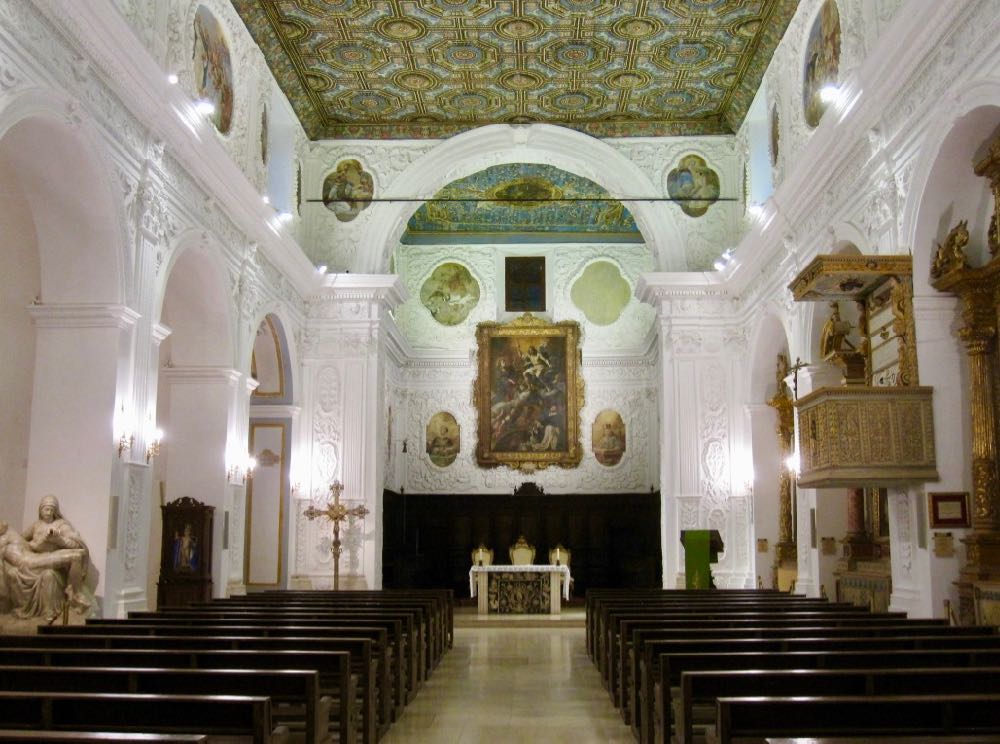
Interior of San Domenico Church in Taverna, Province of Catanzaro
The hand of Mattia Preti can be seen throughout the church. Even the cycle of paintings of the life of St. Dominic above the arches of the central nave were projected by the Cavalier, although completed by other artists. Preti infused the church with an elegant harmony, whether coming or going, such as the gorgeous organ loft, not to be missed over the entrance at the rear of the church.
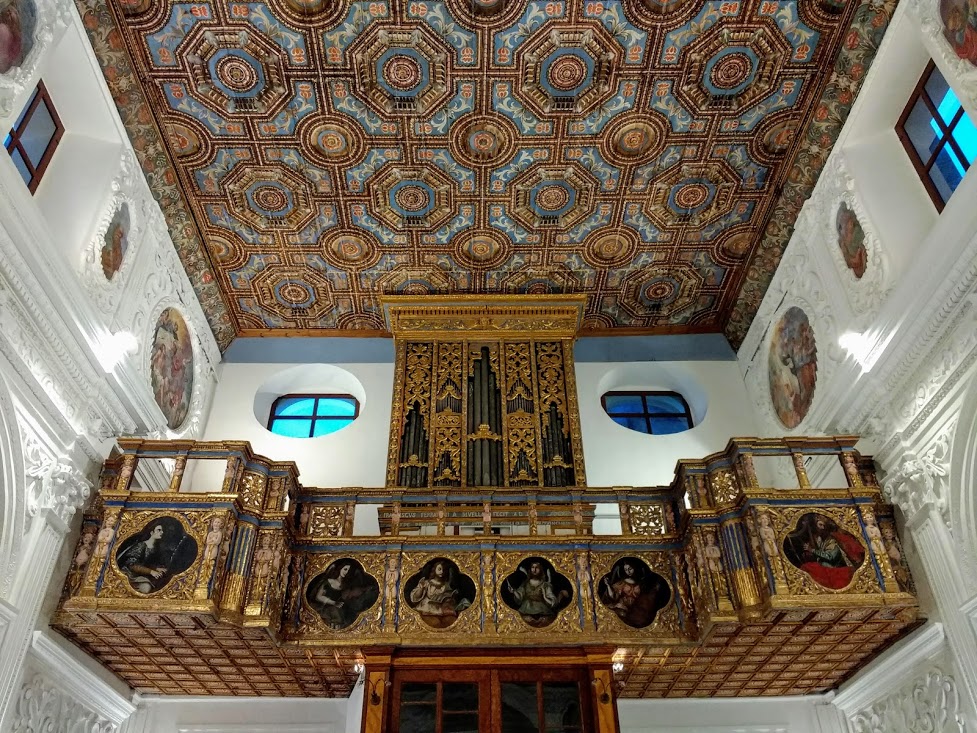
Organ loft in the San Domenico Monumental Church, Taverna
Perhaps the most talked about canvas in the church is the Sermon of St. John the Baptist on the Preti family altar that Mattia painted in circa 1672. In this work, the great master inserted himself in the lower right-hand corner. He is dressed in the garb of the Knights of Malta and holds both a sword and a paintbrush in his right hand.

Preti Family Altar – Sermon of St. John the Baptist with artist’s self-portrait by Mattia Preti, oil on canvas 290 × 202 cm, c 1672, Chiesa Monumentale di San Domenico, Taverna
Other altar oil paintings include a robust image of St. Sebastian, the patron saint of Taverna.
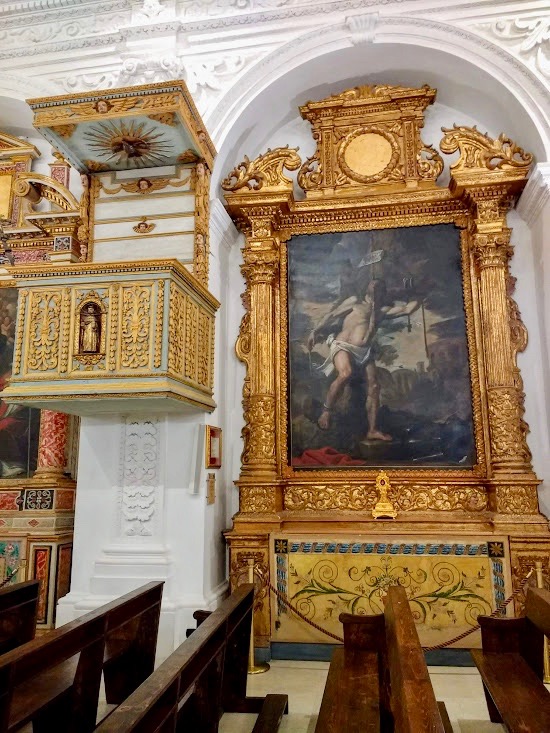
San Sebastiano by Mattia Preti, oil on canvas 272 x 195 cm, c. 1687, San Domenico Church, Taverna
Another canvas depicts the Madonna of the Rosary with St. Dominic and St. Catherine of Siena, all surrounded by gold medallions representing the fifteen Mysteries of the Rosary.
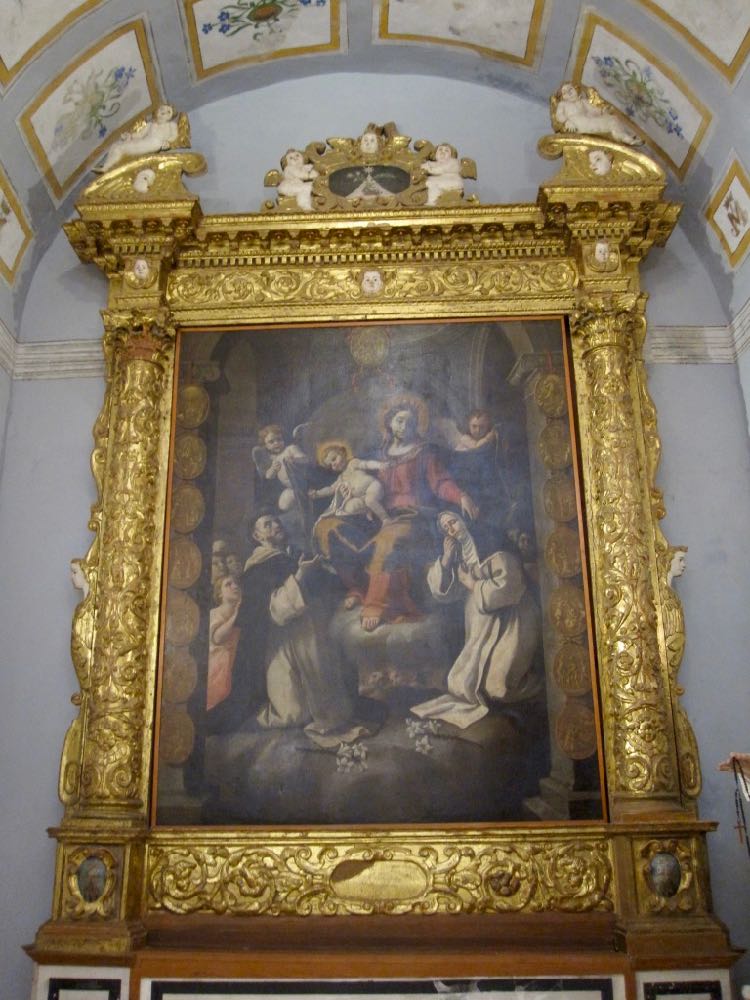
Madonna of the Rosary with St. Dominic and St. Catherine of Siena by Mattia Preti, oil on canvas, 285 x 230 cm, c. 1690, San Domenico Monumental Church, Taverna
Gregorio Preti is also represented in several works. One of his altarpieces can be seen here behind a marble Pietà by early 17th-century Spanish sculptor Giovan Battista Ortega.
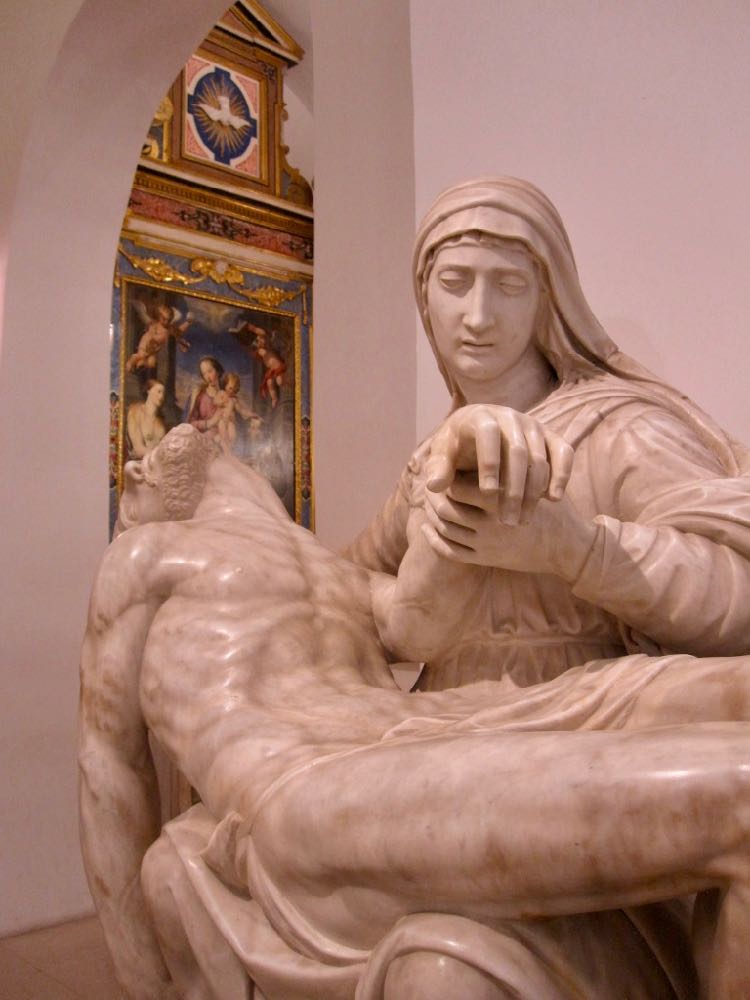
Marble sculpture of the Pietà by Giovan Battista Ortega with painting by Gregorio Preti in background, Chiesa Monumentale di San Domenico, Taverna
ART THEFT IN TAVERNA
To gain access to the church, you either need to buy a ticket to the museum or show up for a service. Otherwise, the doors are locked. The townsfolk aren’t being overly protective. Taverna is chock full of valuable art, a particular not lost on burglars, even those unschooled in the practice of fine-art fencing. Thus, on a cold winter’s night in 1970, the church was broken into. Eleven paintings were stolen: eight by Mattia, one by Gregorio and two by unknown 17th-century artists. The artwork was tracked down within a couple of years; the paintings and the church were restored; and San Domenico Church was reopened in 1988.
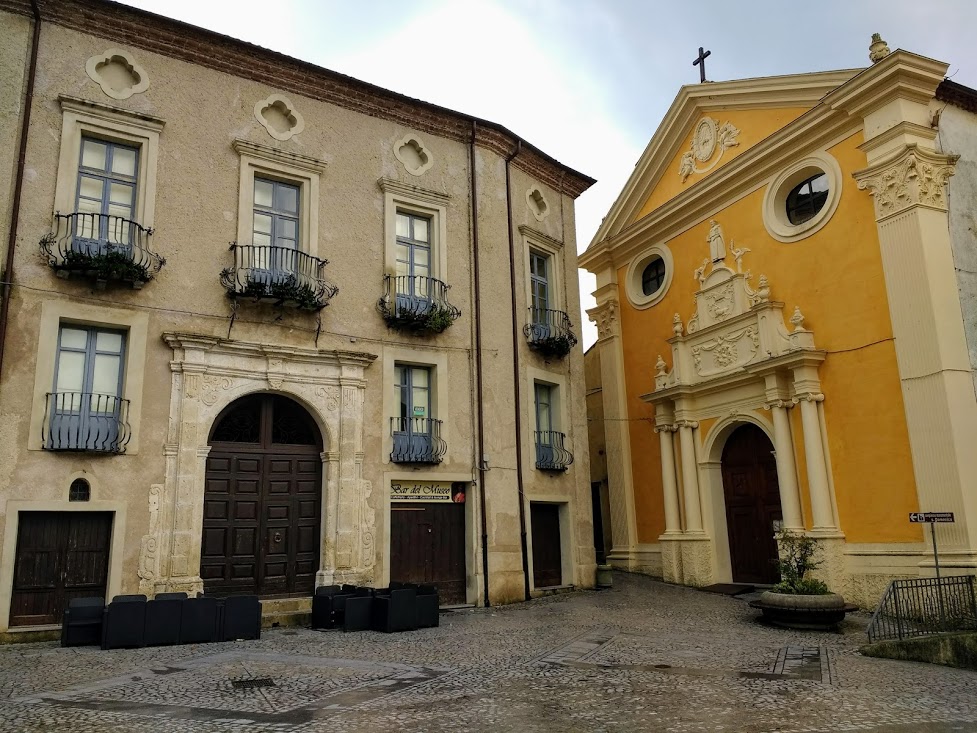
San Domenico Monumental Church in Piazza del Popolo, Taverna
The nearby Church of Santa Barbara also has several paintings by Mattia Preti. After the San Domenico theft and in anticipation of the church’s restoration, the large canvas behind the main altar, Cristo Fulminante – La Visione di San Domenico (Christ With Flames – St. Dominic’s Vision) was moved to the Church of Santa Barbara. It was stolen in 1972, and the newspaper headline of Il Giornale di Calabria read, “Mattia Preti va di moda! In una chiesa di Taverna rubata un’altra sua tela” (Mattia Preti is in style! Another of his canvases stolen in a Taverna church). That fulminante Christ, angry with sinners, was also recovered and hangs once again in its position of honor at the front of San Domenico Church.
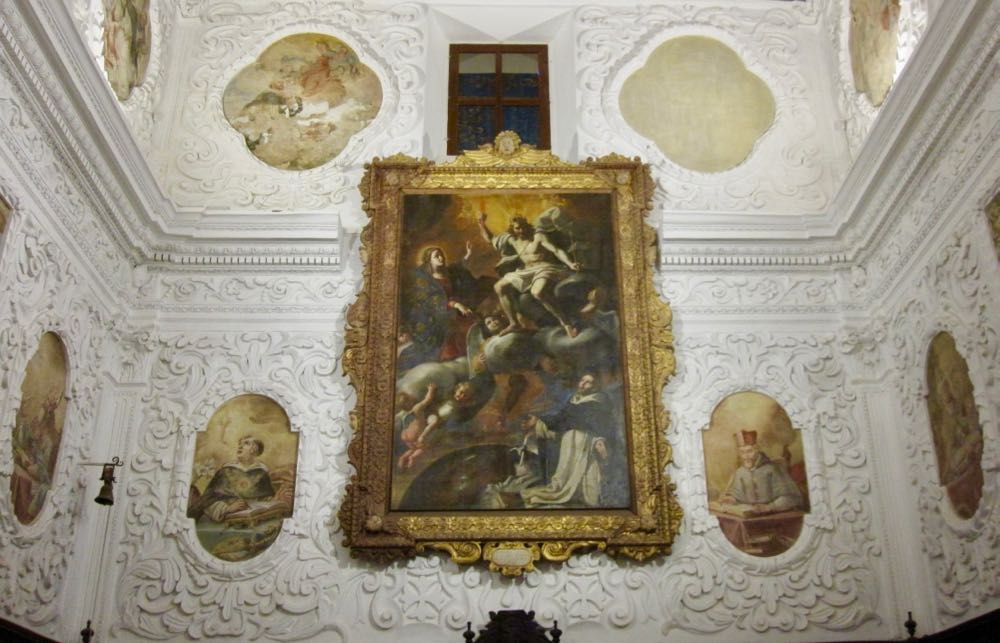
Cristo Fulminante – La Visione di San Domenico (Christ With Flames – St. Dominic’s Vision) by Mattia Preti, oil on canvas, 372 × 260 cm, c. 1680, Chiesa di San Domenico, Taverna
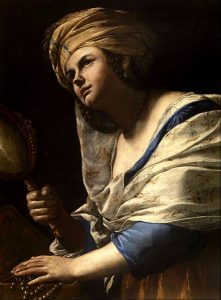
Vanitas by Mattia Preti, Uffizi, Florence
At the time of writing, the Museo Civico di Taverna is open Tuesday through Sunday from 9:30 to 12:30 and 16:00 to 19:00. More information on their Facebook pages: Direzione Museo di Taverna and Artè Cooperative Sociale. Other museums in Calabria with examples of Mattia Preti’s work are the Pinacoteca Civic Art Museum of Reggio Calabria and the National Gallery in Cosenza.
My blogposts regarding stolen art include the The Head of Basilea, The Enigmatic Persephone and The Palazzo della Cultura.
Read more about the fascinating region in the toe of the boot in Calabria: The Other Italy, my non-fiction book about daily life, history, culture, art, food and society in this important area of South Italy. It’s available in paperback and e-book versions.
 Looking for a comprehensive cultural tour? Check out the itinerary of my Calabria Tour. And connect on social media: “Like” Calabria: The Other Italy’s Facebook page, follow me on Karen’s Instagram and Karen’s Twitter for more beautiful pictures and information.
Looking for a comprehensive cultural tour? Check out the itinerary of my Calabria Tour. And connect on social media: “Like” Calabria: The Other Italy’s Facebook page, follow me on Karen’s Instagram and Karen’s Twitter for more beautiful pictures and information.
Sign up below to receive the next blog post directly to your email for free.

Comments 8
Nice article. My grand parents arr from Spezzano Sila, Calsbria.
Author
Thank you. Your family comes from a beautiful part of the world. The Sila Mountains are known as the gran bosco d’Italia or Italy’s great forest.
Very interesting – it’s amazing how realistic his paintings are. We are so used to immediate high-quality photos on our phones, but to create images like this from sketches and paint is extraordinary.
Author
Yes, it takes an incredible amount of skill, and then of course, talent. I particularly like the detail and natural drape of the clothing.
I was not aware of the artist but he certainly reminds me of Caravaggio. Thanks for all of this information.
Author
Happy to share Preti’s work. Now you can keep an eye out for him in major museums.
Knighthood was a duty in Italian folklore.It was the center of the world and men protected the land from any outsiders.
Preti i Caravaggio tworzyli razem na Malcie. Św Hieronima namalowali obaj artyści, każde z tych dzieł zawiera element wspólny, to smuga światła padająca na twarz świętnego. Warto porównać oba dzieła i odnaleźć podobieńswto postaci.